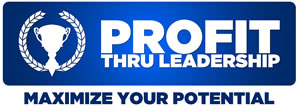One of the topics of greatest interest and concern for many of my clients is how to motivate their Team members. Some Team members are just getting by while others go the extra mile. Most business owners and managers believe they have good people working for them, however, their employees just aren’t maximizing their potential.
What leaders want is to tap into their employees’ “discretionary effort”. In his book, Bringing Out The Best In People, How to Apply the Astonishing Power of Positive Reinforcement, Aubrey C. Daniels defines discretionary effort “as that level of effort people could give if they wanted to, but which is beyond what is required.” According to Mr. Daniels, the only way an organization is able to tap into this potential is through positive reinforcement.
The model suggested in this book to increase productivity and dramatically improve results involves five steps:
- Pinpoint
- Measure
- Feedback
- Reinforce
- Evaluate
I strongly recommend that you buy and read this book. It will help you understand the psychology around what makes this approach so powerful and successful. There are also a number of examples cited which describe how positive reinforcement has been instrumental in exceptional performance.
In a nutshell, the process begins by pinpointing the behaviors required to achieve “X” result. Once it is clear what behaviors must be exhibited, then a tracking mechanism must be developed to monitor these behaviors and progress towards the desired result. Provide positive, immediate, and certain feedback on a consistent basis as the desired behaviors are implemented. During the transition period from “old” to “new” behaviors, consistent and immediate feedback is necessary to “shape” the behaviors towards the desired outcome. Positive reinforcement encourages the employee to continue in the desired new behavior. What gets rewarded gets done. Finally, evaluate the progress being made and adjust where appropriate.
Mr. Daniels points out that our society has changed such that people are more time-sensitive and have become accustomed to “instant” feedback and results. Children today are raised with electronic toys, computers and devices that give them instant results and feedback regarding whether they are winning or losing. Since people are now conditioned to instant information/feedback, leaders must understand this and modify their leadership styles accordingly in order to be effective, especially in managing Millennials.

